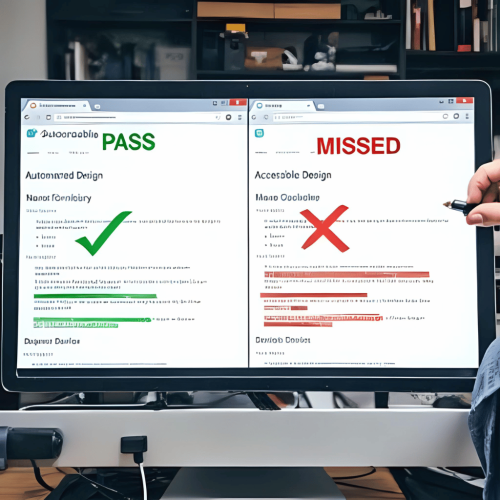Oh no, not the c-word!

What is the C-Word with Web accessibility?
Click Here. Er... Click Where?
Click here. Three simple words that are incredibly frustrating. You see them everywhere on the internet, showing a lack of thought about the language we use every day.
There are certain words we all agree not to use because they are offensive. Some may come to mind as you read this. "Click here" may not, but it is to me, which is why I call it the c-word.
Consider any website littered with this phrase: "Click here to sign up for our mailing list and get a 10% discount on your first purchase." "Click here to read our policy on Equality, Diversity, and Inclusion." Click here for this, click here for that.
You might ask, "What's wrong with that?"
Let's imagine you are blind and using a screen reader. Your screen reader announces, "Click here."
Click where?
You might think it's still acceptable because the screen reader identifies a link, allowing you to decide whether to select it. But what if I said it's akin to telling a room full of people to stand up, even though someone in the room is in a wheelchair? Is this still okay?
Does this make a person with a disability feel more or less welcome?
If, however, you asked everyone in the room to stand up or raise their hand if they were able, would they then feel more or less welcome?
Back to "Click here."
It is a phrase I encounter on websites several times a day, sometimes dozens of times. Do you?
"Click here to buy our stuff." "Click here to subscribe to our newsletter." "Click here to enter our competition."
Click with what? If you cannot use a mouse, you cannot click anything! We are talking about basic accessibility here!
Why not be inclusive? Replace "Click here" with "Follow this link."
"Follow this link to buy our stuff." "Follow this link to subscribe to our newsletter." "Follow this link to enter our competition."
Or even better, make the link itself contain the action that will happen:
"Buy our stuff" "Subscribe to our newsletter." "Enter our competition".
These changes are easy and inclusive.
Language matters, and it’s easy to change. By simply altering the way we phrase things, we can make our accessibility so much better!
Caption: A cartoon character of a man with a horrified expression, his hands up by his cheeks, with wide eyes and an open mouth to emphasize his shock. To the side, there's a mischievous-looking cartoon mouse standing on a computer keyboard. Below them, in a comical font, it says: Oh no! Not the c-word!
Find out how accessible your website is




